It can be difficult to pick out the right flowering tree for your landscape. Everett’s Gardens provides many different varieties to choose from, but it can still be difficult to pick your favorite. Below is a list of some of the ornamental flowering trees that we carry, categorized by bloom color, a brief description of each and why they may be the perfect tree for your landscape.
Purple Flowering
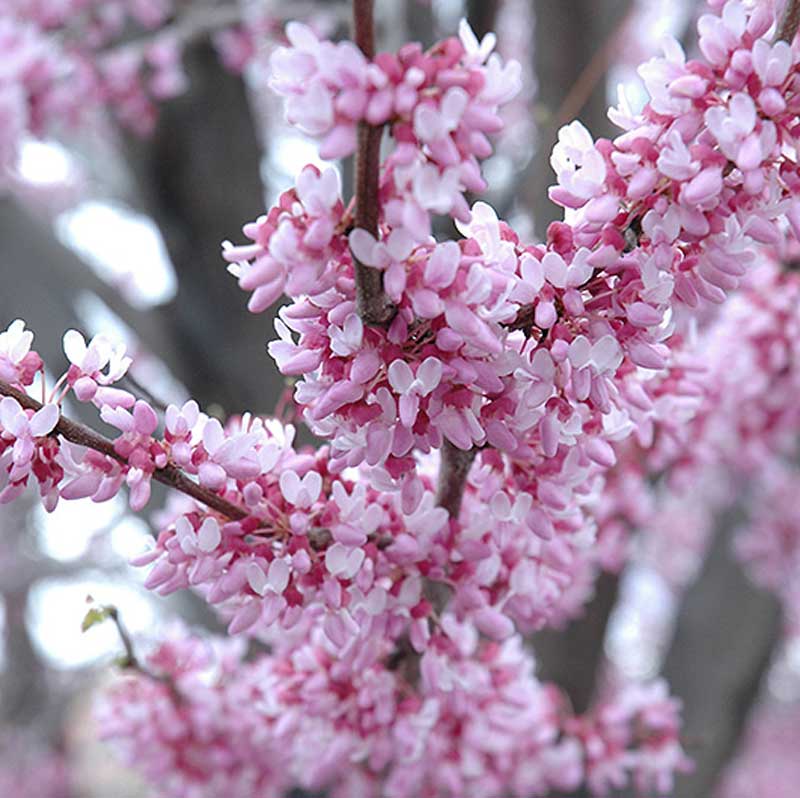
Eastern Redbud
A Michigan Native with green heart-shaped leaves. The spring brings purple flowers that emerge along zig-zag branches. As flowers begin to fade, green heart shaped leaves emerge. In the fall, leaves turn a bright yellow in color. A very quick growing flowering tree matures to a size of 20’ to 30’ tall and 25’ to 35’ wide. Eastern redbuds come in single stem or multi-stem options. Redbuds perform well in full sun to full shade.
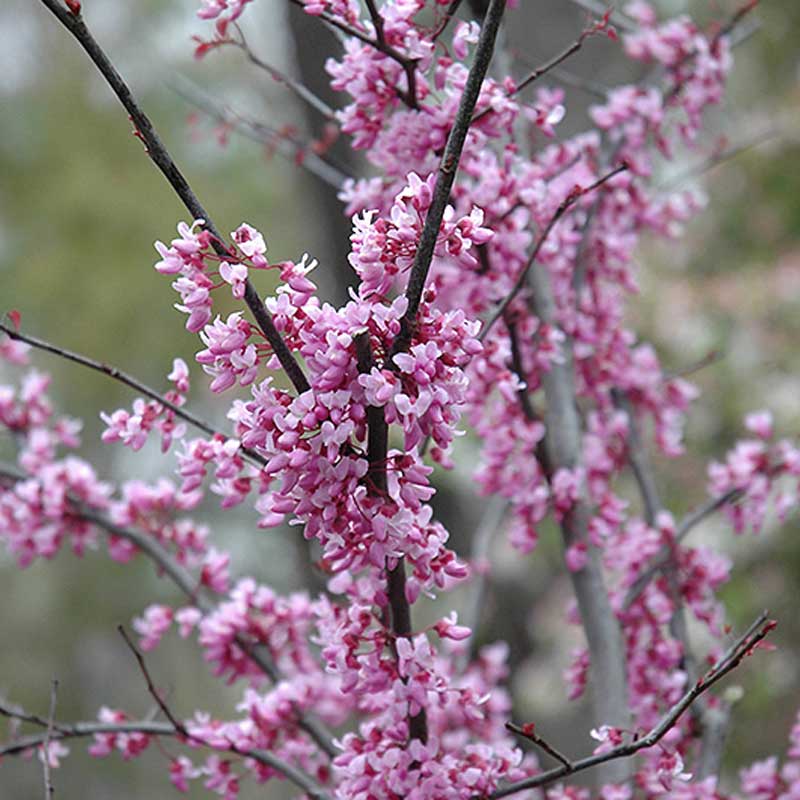
Forest Pansy Redbud
Very similar characteristics to the Eastern Redbud, however this variety not only has the purple flowers, but also purple leaves. The purple leaves will become very dark in color through the summer and will turn an orange-yellow in the fall.
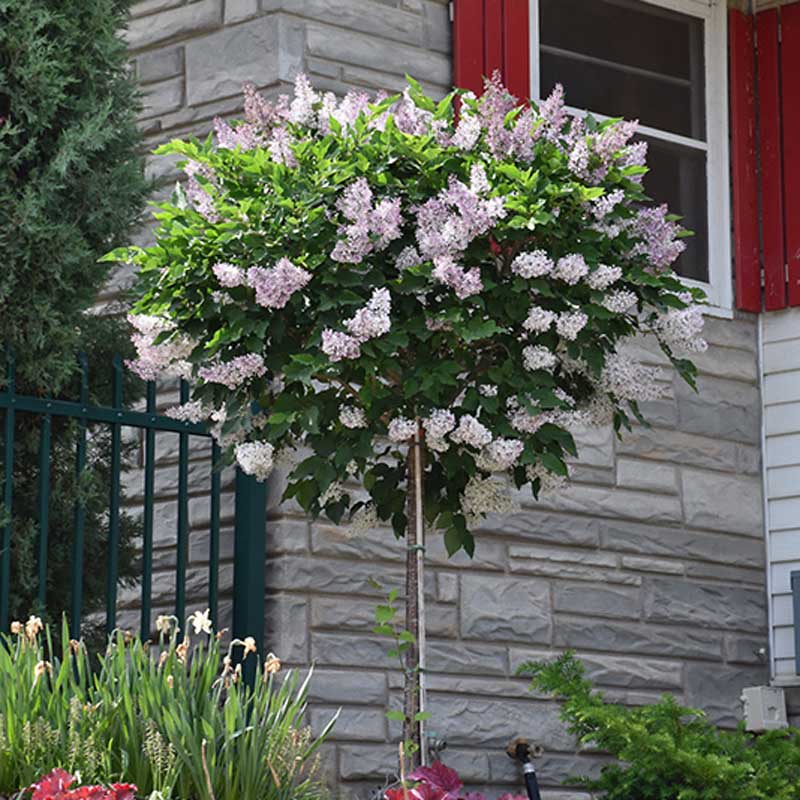
Miss Kim Lilac Tree
A beautiful small ornamental tree that stays under 10 feet. Clusters of pale purple very fragrant flowers appear in the spring covering the entire tree in beautiful color. Miss Kim Lilac Trees have been grafted creating the tree like form and have a very symmetrical lollipop shape to them. The tree will reach 6’ to 8’ tall and similar width, but can be maintained smaller with proper pruning. Miss Kim prefers full sun to give the best flower show.
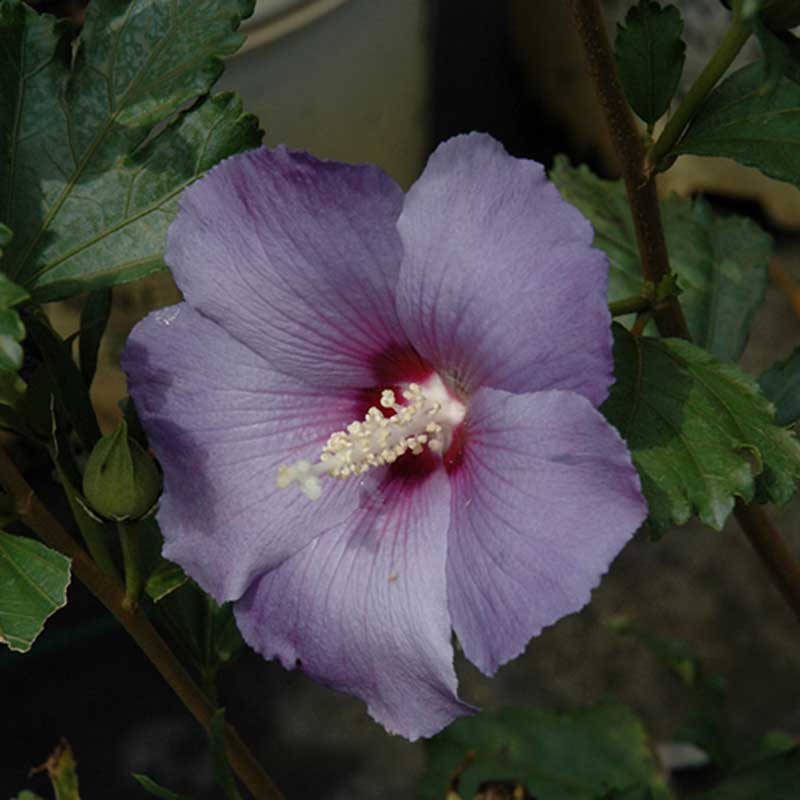
Azurri Blue Satin Rose of Sharon
A Proven Winner! One of the few trees that will be blooming during the summer and has a very tropical feel. While most flowering trees flower in the spring, the Azurri Blue Satin rose of Sharon blooms July through September. The large tropical looking flowers are blue purple in color with a red throat. A compact size reaching 8’ to 12’ tall and 6’ to 10’ wide. Azurri Blue Satin Rose of Sharon require little pruning and no deadheading. Planting one in full sun will produce the best flowers.

Jane Magnolia
An architectural masterpiece when it comes to structure for a flowering tree. A multi-stem tree with thick smooth gray branches that grow together creating a dense habit. The tree reaches 20’ to 25’ tall and 15’ to 20’ wide. Large flowers appear in early spring reaching 3” to 4” wide. The flowers are reddish purple on the outside with white on the inside.
Pink Flowering
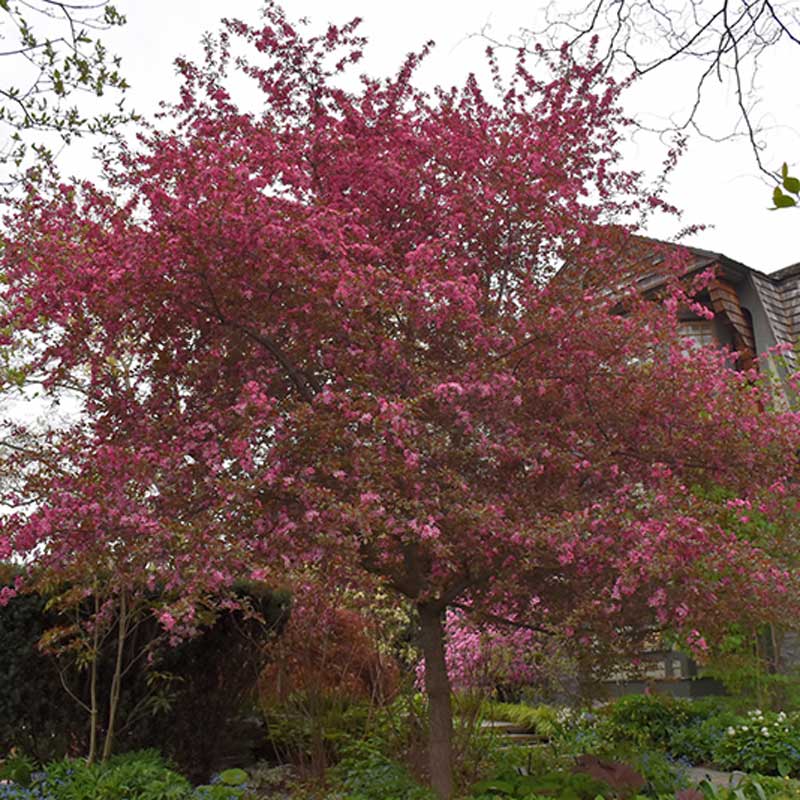
Royal Raindrop Crabapple
Royal Raindrop Crabapples are a vigorous upright spreading tree with a firework of deep pink flowers in the spring. The entire tree is covered in colorful flowers that have a sweet fragrance lasting for a few weeks. The leaves emerge a burgundy red that deepen in color through the summer. Royal Raindrop Crabapples produce bright red barriers in mid-summer that last through the fall when the leaves turn orange-red in color. They reach a height of 20’ and a spread of 15’ and prefer full sun.
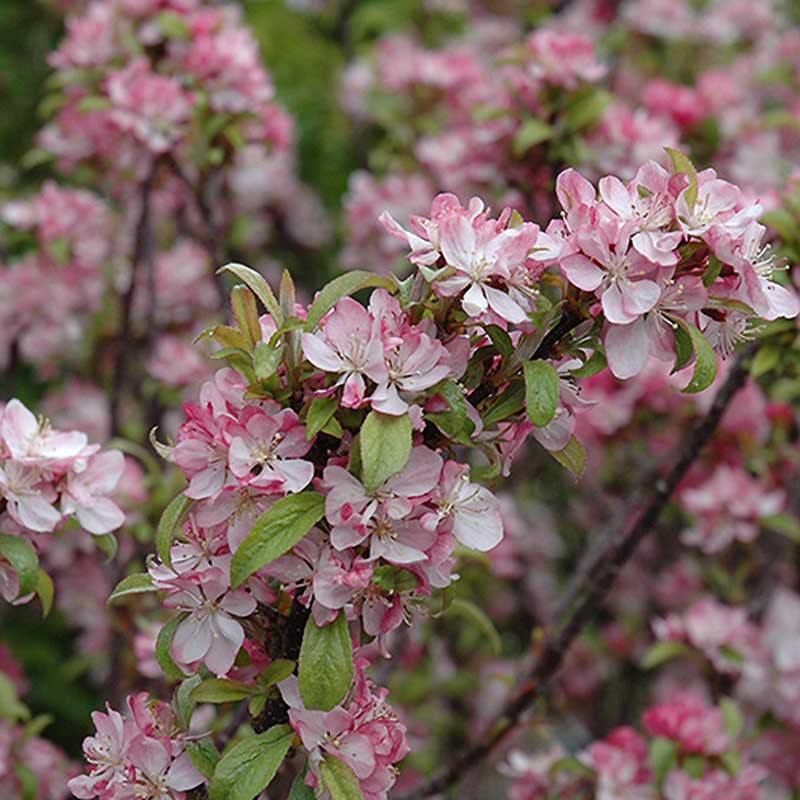
Coralburst Crabapple
A compact sized Crabapple, the Coralburst Crabapple will reach a size of 12’ tall and 12’ wide with a very dense habit. Coralburst Crabapples get their name from the coral pink buds that open to double rose pink flowers in early spring. A spectacular choice for adding spring color to a smaller landscape. Plant in full sun.
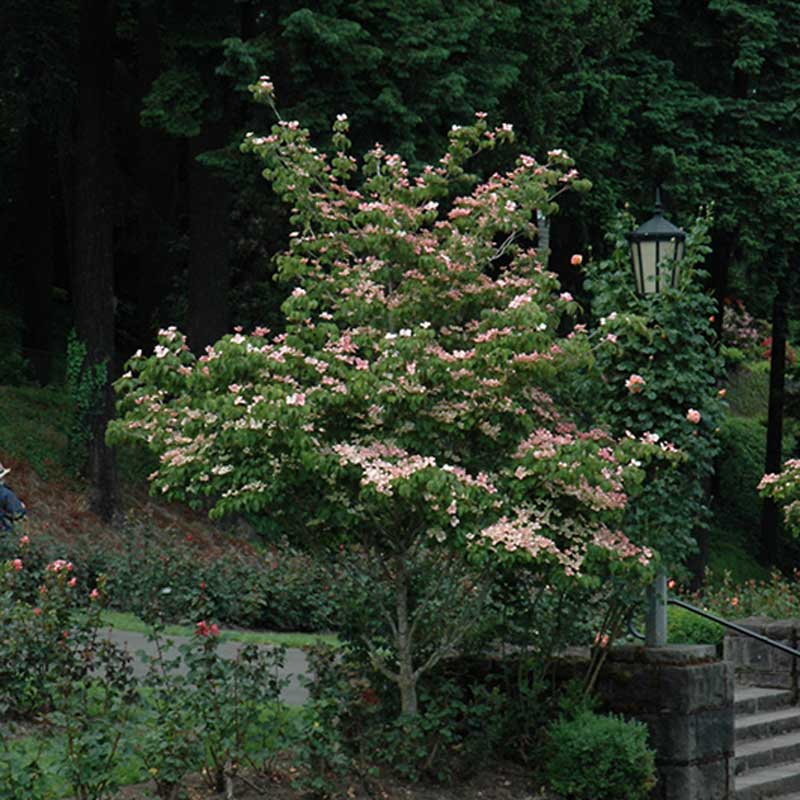
Heart Throb Dogwood
Similar to the Radiant Rose Dogwood, the Heart Throb Dogwood has deeper pink bracts (a modified leaf with a flower or flower cluster in its center) that can reach up to 4” wide. The Heart Throb Dogwood will reach 30’ tall and wide and have a rounded habit. Heart Throb Dogwoods also perform well in shade to part sun and turn brilliant red in the fall.

Kwanzan Cherry
The Kwanzan Cherry is a good option because of its fruitless nature. The Kwanzan cherry has captivating pink double flowers resembling a carnation. Dark green leaves emerge while it is flowering giving it a lovely contrast. Leaves turn beautiful fall colors from deep purple to bright orange. Kwanzan Cherries have a vase like shape reaching 20’ tall and 25’ wide. Best planted in full sun.
White Flowering

Red Jewel Crabapple
One of the best 4 season flowering trees, the Red Jewel Crabapple begins in the spring with a soft white flower that change into bright red berries that stay on the tree until the following spring. Excellent dark green foliage complements the red berries as they form through the summer. Red Jewel Crabapples will reach a height of 15’ and a width of 12’. Best planted in full sun.
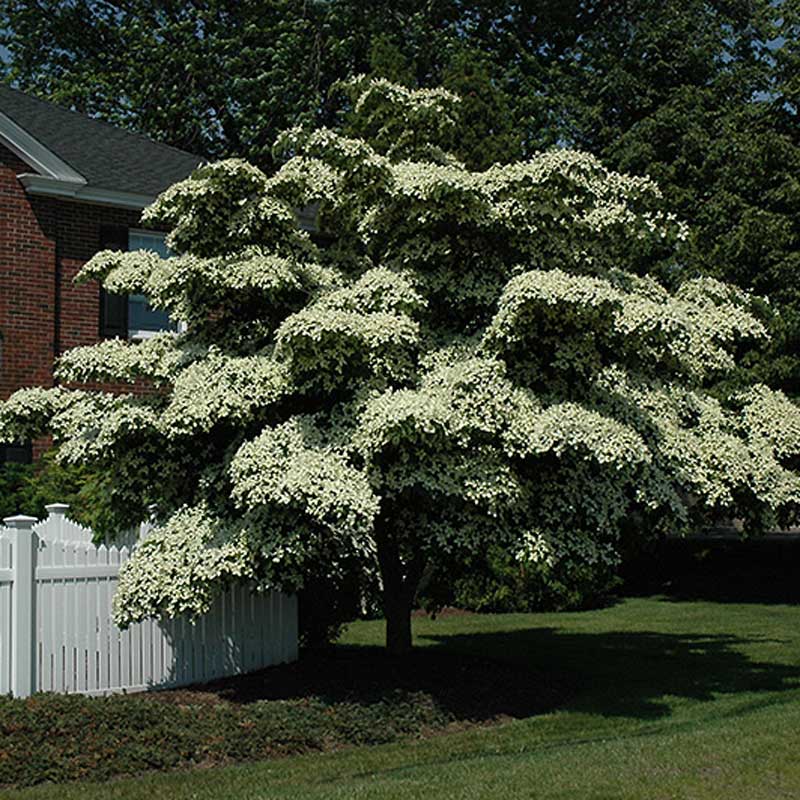
Kousa Dogwood
A slightly later spring flowering tree that will be flowering after everything else has finished. As the tree ages, it will form horizontal branches that will be adorned with creamy white flowers in May and June. Kousa Dogwoods will produce a pinkish red 1” fruit on them in midsummer adding to the appeal. Kousa Dogwoods will reach 20’ tall and wide and are best planted in full sun, but will tolerate some shade.

Appalachian Spring Dogwood
The Appalachian Spring Dogwood is a good shade tolerant flowering tree. The large showy white bracts (a modified leaf with a flower or flower cluster in its center) line the branches with dark green leaves underneath. The Appalachian Dogwood will reach 20’ to 30’ tall and wide turns red in the fall.
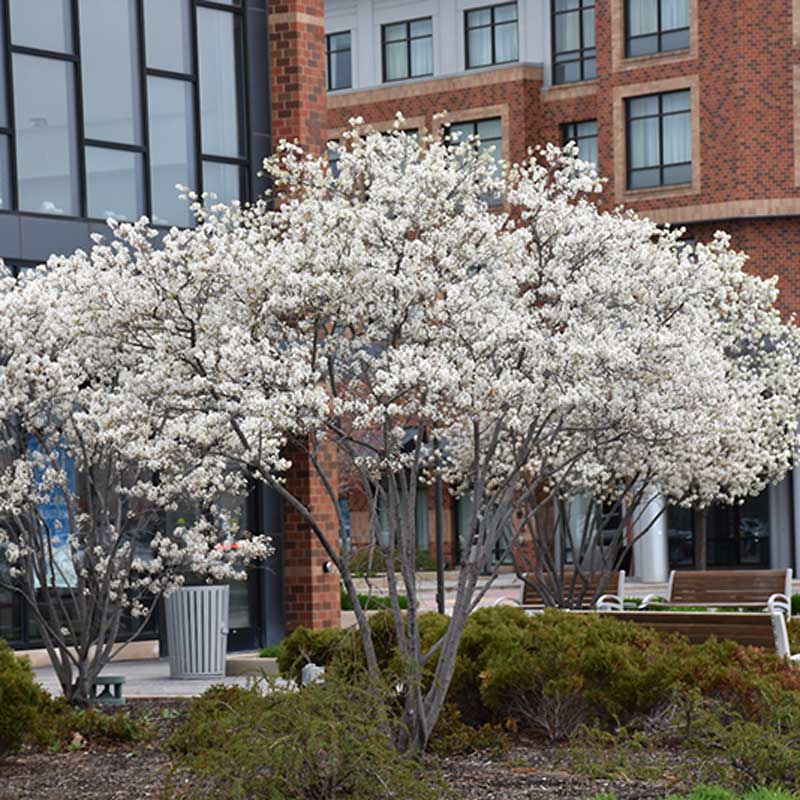
Autumn Brillance Serviceberry
The Autumn Brilliance Serviceberry can be used as a single stem flowering tree or a multi-stem tree. White whispy flowers emerge in the spring on smooth gray attractive branches. The white flowers give way to edible berries in June. The simple light green leaves turn brilliant colors in the fall from red to orange to yellow. Autumn Brilliance Serviceberry will reach 20’ to 25’ tall at maturity and do best in full sun to part shade.

Ivory Silk Lilac Tree
Another great option for a latter blooming tree. The Ivory Silk Lilac Tree has the traditional lilac cluster of flowers that are white in color. The fragrant flowers appear in June lasting for a few weeks. The Ivory Silk Lilac Tree will reach 20’ to 30’ tall and 15’ to 25’ wide. The cherry like reddish brown bark gives the tree additional interest all year long. Best if planted in full sun.
Red Flowering
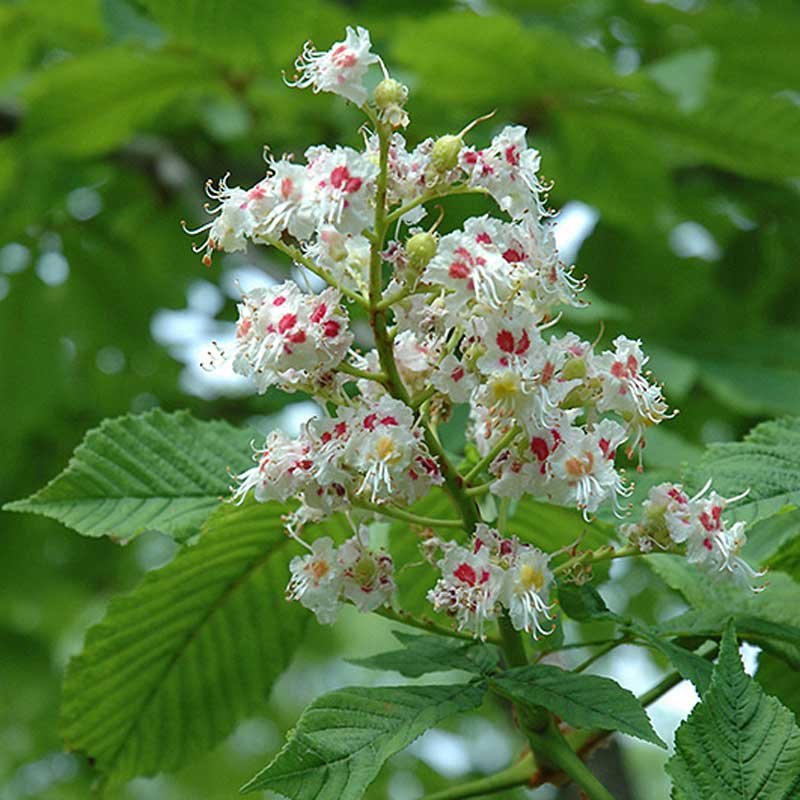
Briotii Horsechestnut
The Briotii Horsechestnut is truly an exceptional tree. The rose-red flowers are borne in May on a 6” to 10” high and 3” to 4” wide panicle creating an amazing cluster of red flowers. The dark green leaves are made up of 5 to 7 whorled leaflets giving the tree an exceptional look. The Briotii Horsechestnut will reach 40’ tall and wide and does best in full sun.
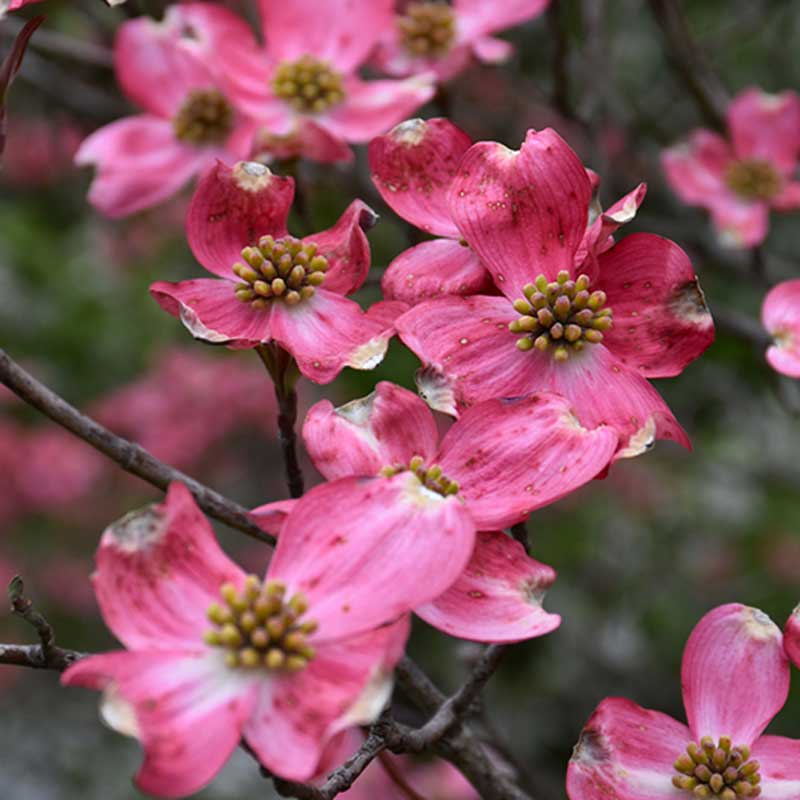
Cherokee Chief Dogwood
Cherokee Chief Dogwood have fantastic red bracts (a modified leaf with a flower or flower cluster in its center) that appear in the spring. Cherokee Chief Dogwoods do very will in the shade with part sun. They can grow to 20’ tall and wide with great structural form.
Yellow Flowering
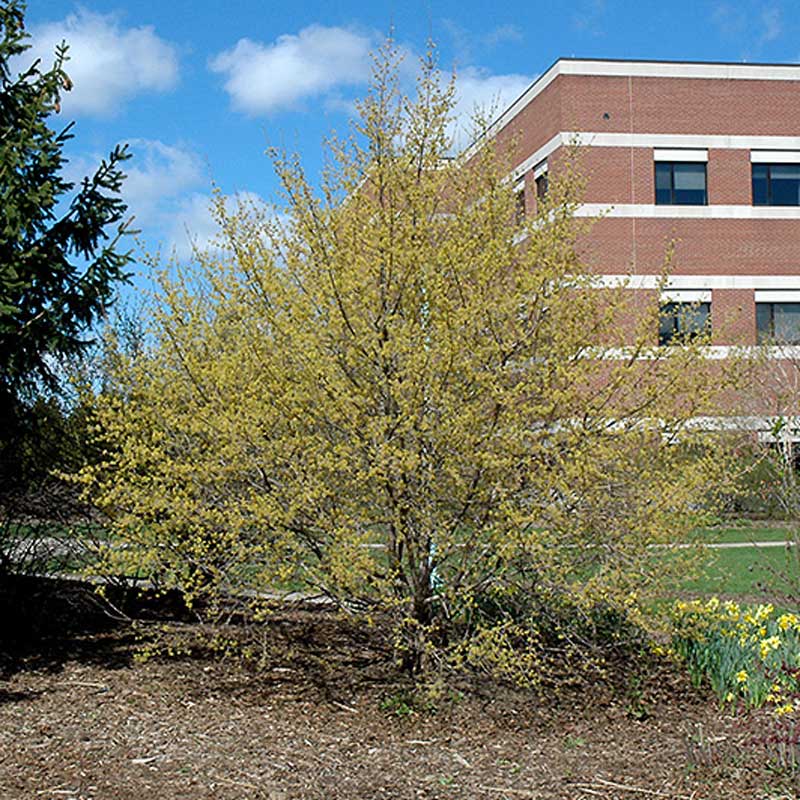
Cornelian Cherry Dogwood
The Corneliancherry Dogwood is one of the first trees to flower in the spring. Yellow Flowers emerge in March along the exfoliating scaley branches of the plant. Cornelian cherry Dogwoods have a multi-stem habit with vertical branching. They can reach sizes of 20’ to 25’ tall and 15’ wide. Cornelian cherry Dogwoods do well in part shade to full sun.
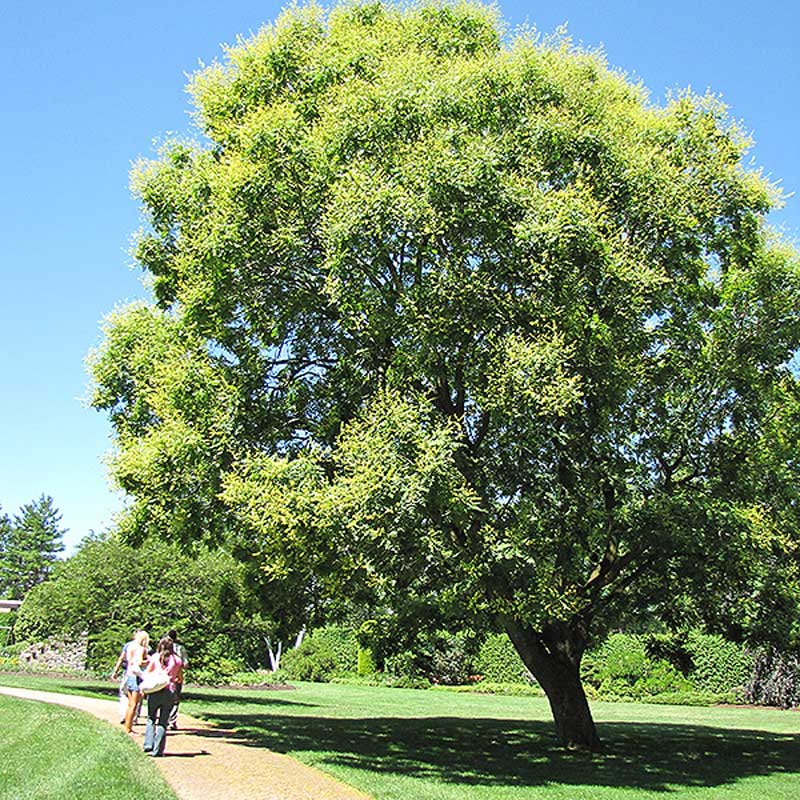
Golden Rain-Tree
Another great summer flowering tree option. Yellow flowers appear in June and July on 12” to 15” panicles. Flowers give way to papery brown 3-sided seed pod that resembles a lantern. The Golden Rain-Tree has a compound purplish-red leaf that matures to green and then changes to golden yellow in the fall. Golden Rain-trees will reach heights of 30’ to 40’ tall and similar width and does best in full sun.
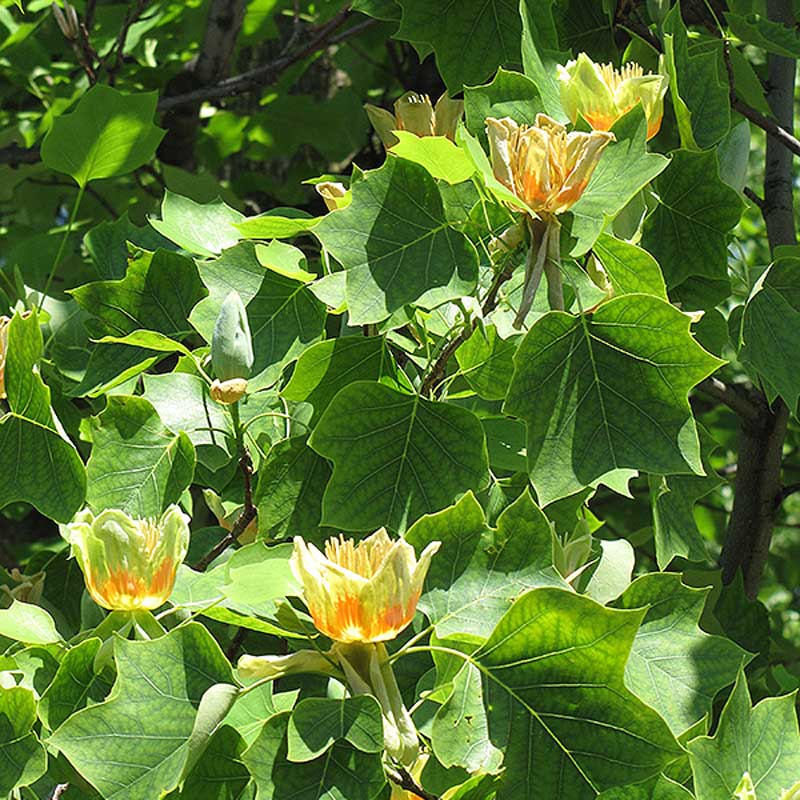
Tulip Tree
Tulip Trees are unique in the fact that they are a flowering shade tree. Tulip trees can reach heights of 100’ and widths of 65’ quickly giving shade in a short period of time. The leaves of a Tulip tree resemble the shape of a duck’s foot and have a glossy light green color to them. Flowers are borne on the tree in late spring in a tulip shape, giving the tree its name. The flowers are yellow on the ends with an orange throat. Tulip trees do excellent in wetter areas and preform the best in full sun.
Whether you’re looking to plant an ornamental tree yourself or need assistance, we’re here to help! We have three options once you have selected your tree. First, is the Grab and Go option. Choose your tree and take it home in your vehicle that day. Second, is delivery. Once you’ve chosen your tree we will schedule a time and location where you’d like it dropped off. Easy! Last option, is delivery and install. If you’d like the ease of sitting back, we provide services where you can do just that. We will schedule a time when our crew can come out and plant the tree for you! Pricing will depend on location and logistics. No matter what option you choose, you’re making a good one! Our sales team is excited to get started with you in your landscape journey.

